THE CENTRAL VIETNAM
Central Vietnam is the narrowest part of the country. It stretches over a thousand kilometres from north to south, bordered to the west by the Annam mountain range, a natural border with Laos and open to the east on the Eastern Sea.
The ancient kingdom of Annam has many assets that will charm you.

During a trip to Vietnam, it is interesting to go through the center of Vietnam. This region offers cultural and historical interest.
Indeed, it conceals treasures… Besides the imperial city of Huế whose palaces, tombs, temples and pagodas are so many marvels, other cities deserve more than a detour. Hội An, a museum town, with its old houses, unique in Vietnam, drowsy due to the silting up of its river which made it communicate with the sea, Đà Nẵng, gripped by construction fever, where towers and « resorts » transform the seafront, the sanctuary of Mỹ Sơn with the sumptuous remains of the ancient kingdom of Champa…
The landscapes are superb, in this region where the mountain falls steeply into the sea, however sparing here and there immense uncrowded sandy beaches.
The major regions of Central Vietnam
✔ North Central Coast (Bắc Trung Bộ)
It brings together six provinces in the northern half of the narrow coastal strip, all wedged between the South China Sea to the east and Laos to the west.
- The province of Thanh Hóa which chief town is Thanh Hóa.
- The province of Nghệ An which chief town is Vinh.
- The province of Hà Tĩnh which chief town is Hà Tĩnh.
- The province of Quảng Bình which chief town is Đồng Hới.
- The province of Quảng Trị which cief town is Đông Hà.
- The province of Thừa Thiên-Huế which chief town is Huế.


✔The South Central Coast (Nam Trung Bộ)
It contains seven provinces and the independent municipality of Đà Nẵng, located in the southern half of the coastal strip.
- The province of Quảng Nam which chief town is Tam Kỳ.
- The province of Quảng Ngãi which chief town is Quảng Ngãi.
- The province of Bình Địnhwhich chief town is Quy Nhơn.
- The province of Phú Yên which chief town is Tuy Hòa.
- The province of Khánh Hòa which chief town is Nha Trang.
- The province of Ninh Thuận which chief town is Phan Rang – Tháp Chàm.
- The province of Bình Thuận which chief town is Phan Thiết.
+ The city of Đà Nẵng.




✔ The Central Mountains (Tây Nguyên) or Central Highlands
It is the second region to have no maritime access. It comprises five mountainous provinces of south-central Vietnam, mainly inhabited by ethnic minorities, although many Viêt also live there.
- The province of Kon Tum which chief town is Kon Tum.
- The province of Gia Lai which chief town is Pleiku.
- The province of Đắk Lắk which chief town is Buôn Ma Thuột.
- The province of Đắk Nông which chief town is Gia Nghĩa.
- The province of Lâm Đồng which chief town is Đà Lạt.
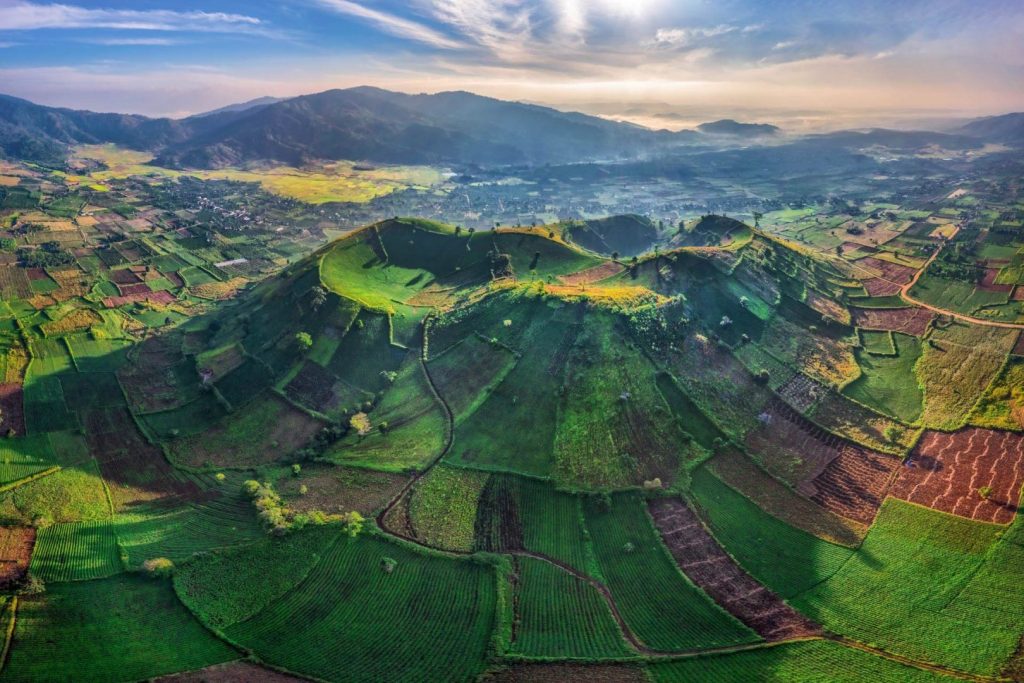
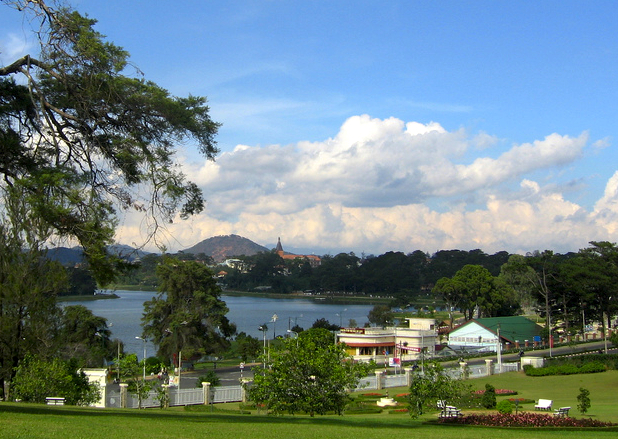

✔ The climate of Central Vietnam
It is therefore better to favor the months of February to June during the dry season to travel through the center of the country, around Hue, Danang and Hoi An.
In summary :
- Spring (January to June) offers you sunny weather, a quite bearable temperature (between 25 and 35°C). Heat mists and showers announce dusk and sometimes continue into the night.
- Summer (July to September) is a mixed season, rather hot and humid.
- Autumn (September to January) is known as a busy season. The shores are swept and the land flooded by the tails of typhoons from the China Sea. The temperature is stable (15-20°C) but the weather very variable. Avoid if you want to relax on the beaches.
Typical dishes of Central Vietnam

Now let’s move on to the specialties of Central Vietnam.
Inspired by both Cham and the imperial court, the cuisine of Central Vietnam differs from that of the North by the significant use of peppers, making it sometimes difficult to eat (even for some Vietnamese!).
Despite this, the region is recognized as having the best gastronomy in the country. You will judge for yourselves!
Voici donc les spécialités que l’on peut trouver à Hué et dans le Centre.
✔ Bún bò Huế (Hue beef noodles)
Hue’s iconic popular dish! It is a soup made from rice paste (“Bún”) and beef (“Bò”).
The particular taste of the soup is obtained by simmering bones and beef shank with lemongrass, a fragrance that predominates the scents of Bún Bò Huế. But the flavors don’t stop there because you have to add a large number of condiments: coriander, chives, onion, banana blossom, mint… Do not forget the pepper and sugar, otherwise we would not be in the South of Vietnam! Finally, the dish contains mam ruoc (shrimp paste) and most often coagulated pork blood!
This dish is therefore very rich and is enough for a lunch! Be careful, the recipe of Huế, more than the others, is very spicy!

✔ Bún thịt nướng Huế (rice vermicelli with grilled meat)
Another scrumptious noodle dish! Unlike Bún Bò Huế, the dish is this time served cold and dry (without soup). If you don’t want to eat soup, Bún thịt nướng is what you need!
Noodles and grilled pork with lemongrass are mixed with many fragrant aromatic herbs, vegetables (carrots, white radish, papaya, cucumber). Everything is sprinkled with crushed peanuts and fried onions. We will finally water your dish with nuoc mam sauce with garlic and chilli!
You can taste this dish in the street, you will probably be caught by the smell of grilled meat!
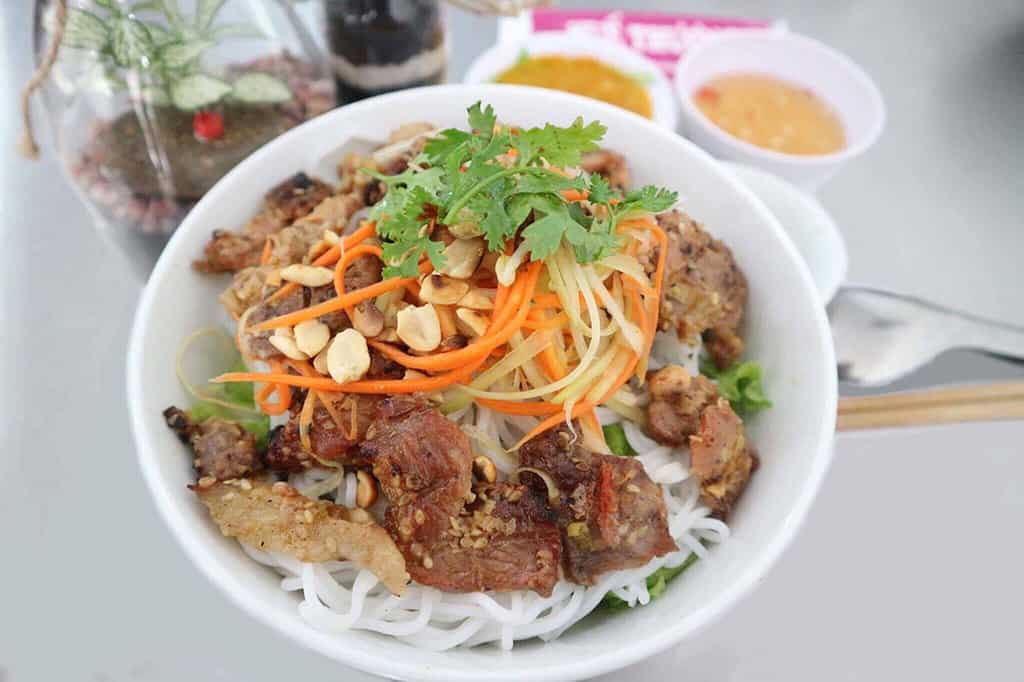
✔ Bánh Bèo Chén (shrimp crackers)
These are small pancakes made from rice flour and tapioca. On top of this paste, are added pieces of dried shrimp and crispy pork skin mixed in onion oil.
Bánh Bèo are small and are served on a tray for everyone to help themselves. It is a perfect and friendly starter, for lunch or dinner!


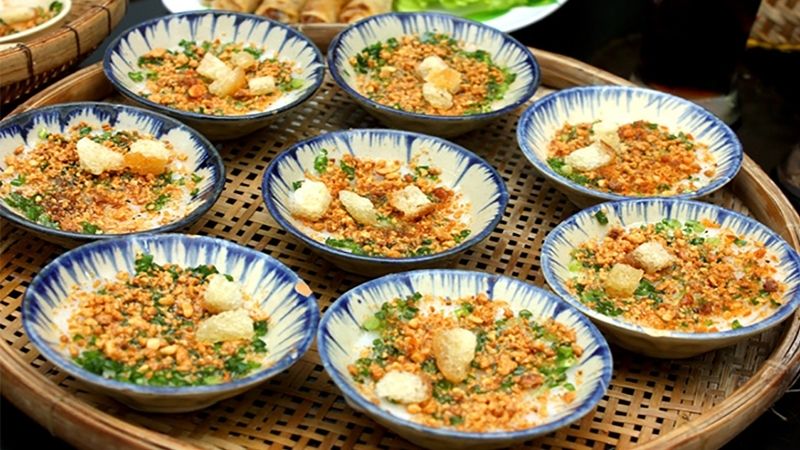
✔Bánh ram ít (Huế dumplings)
A real cute sin! Types of ravioli with three layers:
- The base is made of a fried and crispy rice cake
- Above you have a dumpling (ball) of sticky rice stuffed with beans, pieces of shrimp and pork belly.
- The whole is topped off with sliced onions and prawns.
Crunchy and gooey textures go together perfectly. It can be eaten at any time of the day!


✔ Bún Chả Cá (fish noodle soup)
It is one of the typical dishes of Central Vietnam, a specialty of Danang. Everyone will tell you: to find the true flavors of Bún Chả Cá, you have to go to Danang!
This fish soup (“Cá” meaning fish in Vietnamese) has the particularity of having a broth prepared from fish bones and not pig bones as for Phô, a traditional soup from northern Vietnam. Everything is done with fish!
You will find in your bowl of Bún Chả Cá: rice noodles (“Bún”), fish balls (“Chả Cá”), bamboo shoots, tomatoes, aromatic herbs (chives, mint, basil etc. ).
A pure distillation of central Vietnamese cuisine fueled by the ocean!
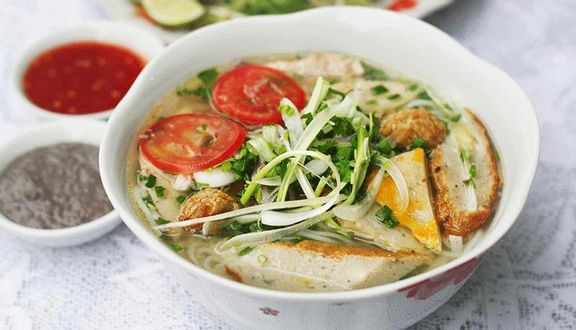
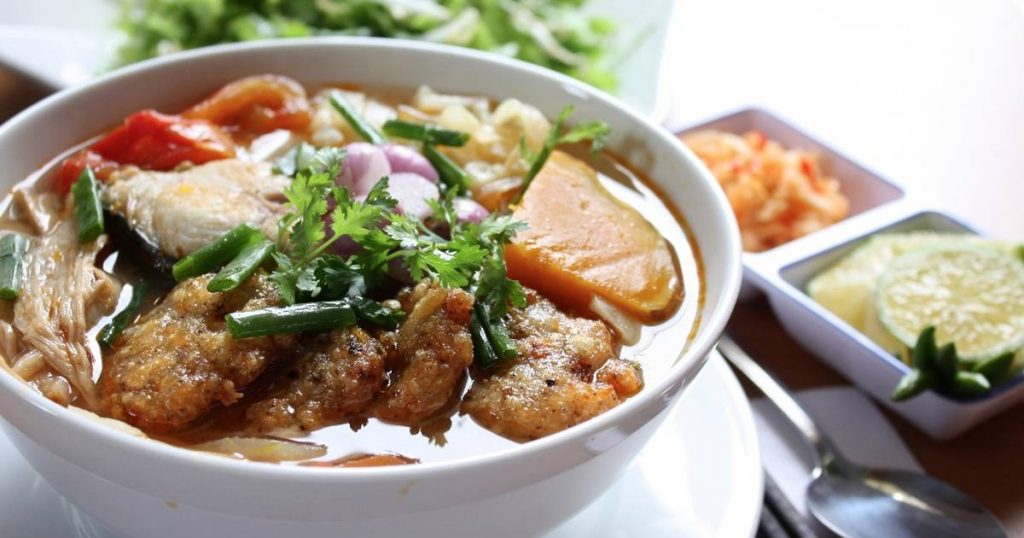
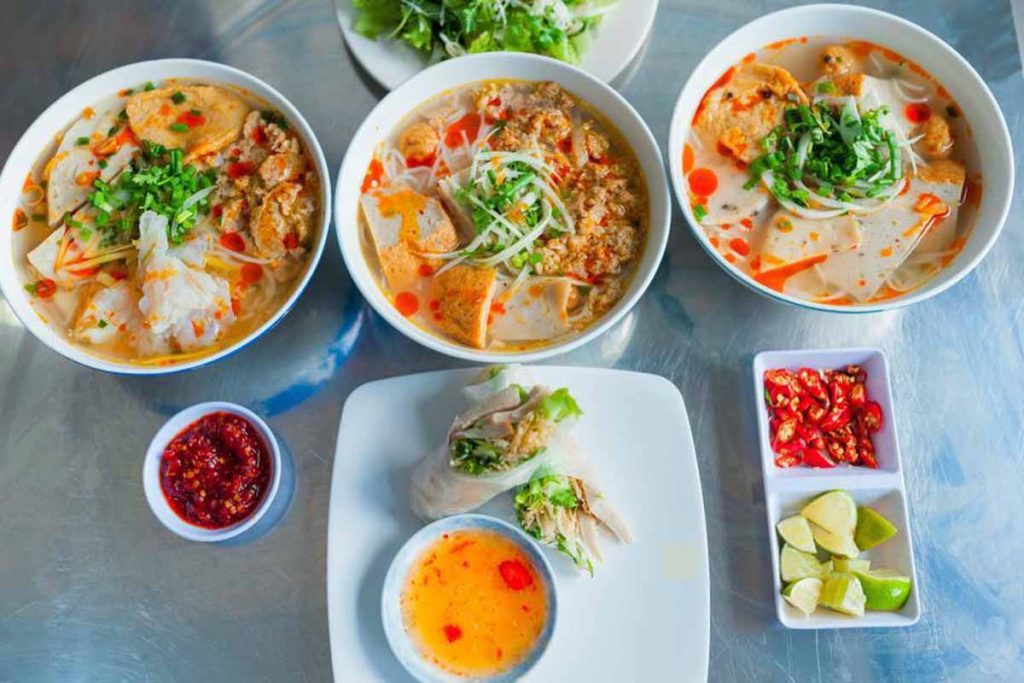
✔ Cao Lầu (noodles with lacquered pork and herbs)
It is THE typical dish that reflects the mix of cultures of Hoi An. If there was only one dish to taste during your stay in Hoi An, it would be this one.
This dish mixes Chinese, Japanese and Vietnamese influences, which can also be found in the architecture of the old town of Hoi An. You will indeed find in this dish noodles reminiscent of sobas, the famous Japanese noodles. Aromatic herbs come from Chinese and Vietnamese cultures.
The rice noodles used in Cao Lầu are thicker than the “Bún” or “Phô” noodles found in northern Vietnam. The noodles are served with slices of lacquered pork and different herbs and salad leaves. Everything is mixed in a pork broth base.
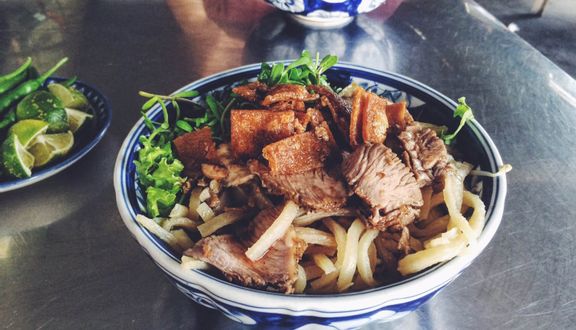

✔ Mì Quảng (wide yellow rice noodles)
It is a typical noodle dish of Quang Nam and Quang Ngai provinces in central Vietnam. It is often served for breakfast.
It is a rice noodle soup (with wide white or yellow pasta) accompanied by meat (pork, beef or chicken) or shrimp and a crispy rice cake. Everything is bathed in pork broth.
No less than nine aromatic herbs and condiments are needed to give the unique taste of My Quang: basil, coriander, lady’s-thumb, baby spinach, baby salad, bean sprout, spring onion, banana flower, onion.
The Vietnamese like to add more green chilli to spice it all up… It’s a try! Still other people add peanuts and fried onions on top.
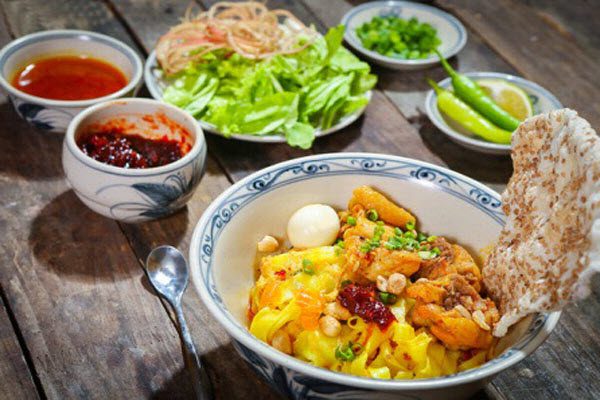
✔ Bánh Bột Lọc Huế (transparent shrimp cake)
Bánh Bột Lọc Huế is known as a very typical Huế dish. Bánh Bột Lọc Huế is filled with shrimp and meat, the outer shell is hard and soft at the same time, which makes many visitors like it very much.
Transparent Huế cake is not only considered a snack, you can enjoy it instead of rice or the main meal of the day. This kind of dish is popular in many localities, however, it is only when you eat it in Huế that you can feel the typical delicious taste of the central region.
In Huế, there are two types of transparent cake, i.e. transparent cake without banana leaves and wrapped with banana leaves. This delicious dish should be transparent, the dough should not stick and not settle on the sheets. When tasting, this dish should have the sweetness of flour and the rich taste of shrimp meat.
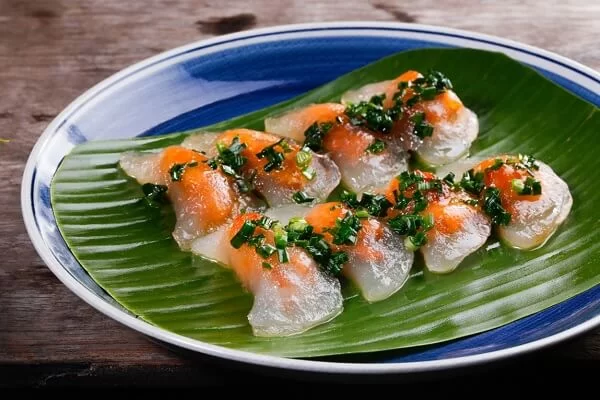


✔ Wonton Hoi An
Shrimp wonton is one of the dishes not to be missed in the ancient town of Hoi An. It is, moreover, one of the local specialties with Cao Lầu.
Wonton comes from China but it has been adapted by locals to local taste. Similar to dumplings, Wonton is made from rice flour and filled with ingredients such as shrimp, pork, egg, and spices. There are many types of wonton dishes: fried wonton, wonton soup, wonton soup with noodles…
Hoi An Fried Wontons are topped with a vegetable topping, and the sweet and sour prawns are crispy, mouth-watering works of art. A delight that you should not miss!



Need more infos ? Contact us for personal advice!

